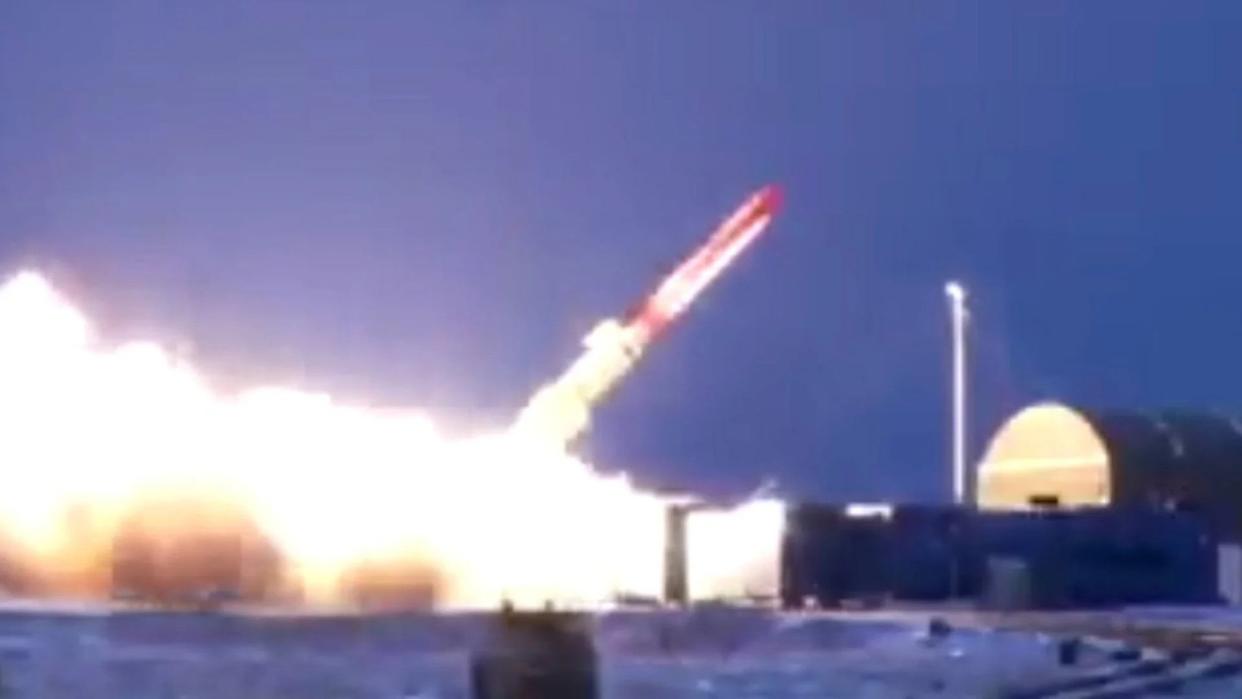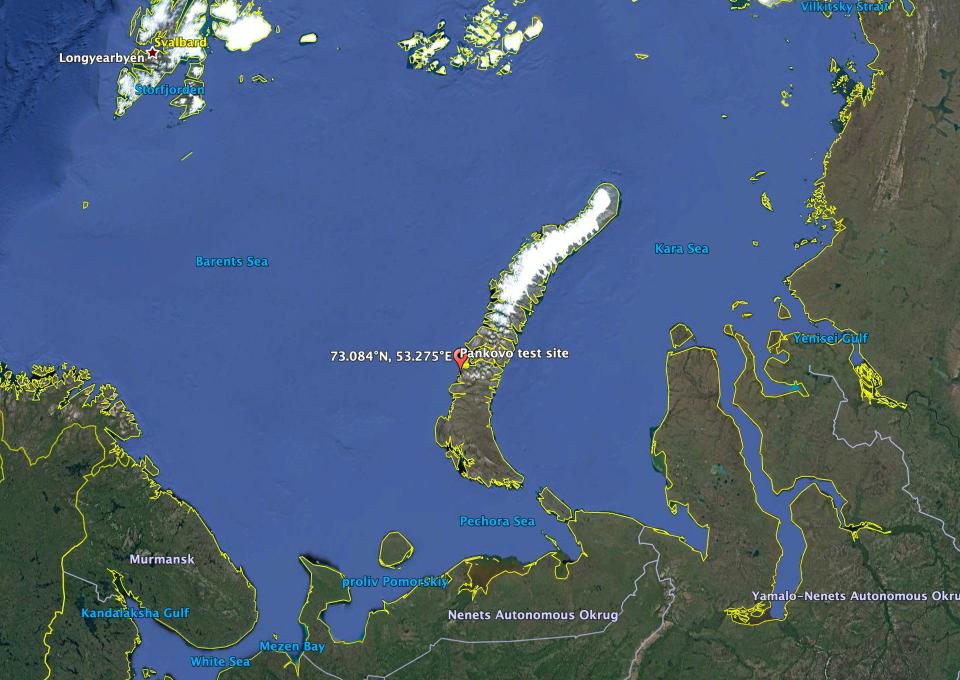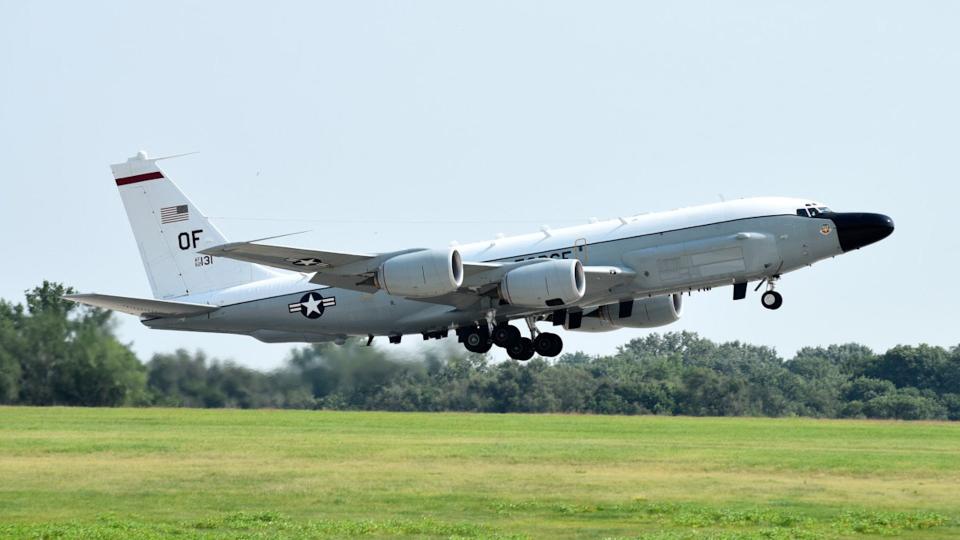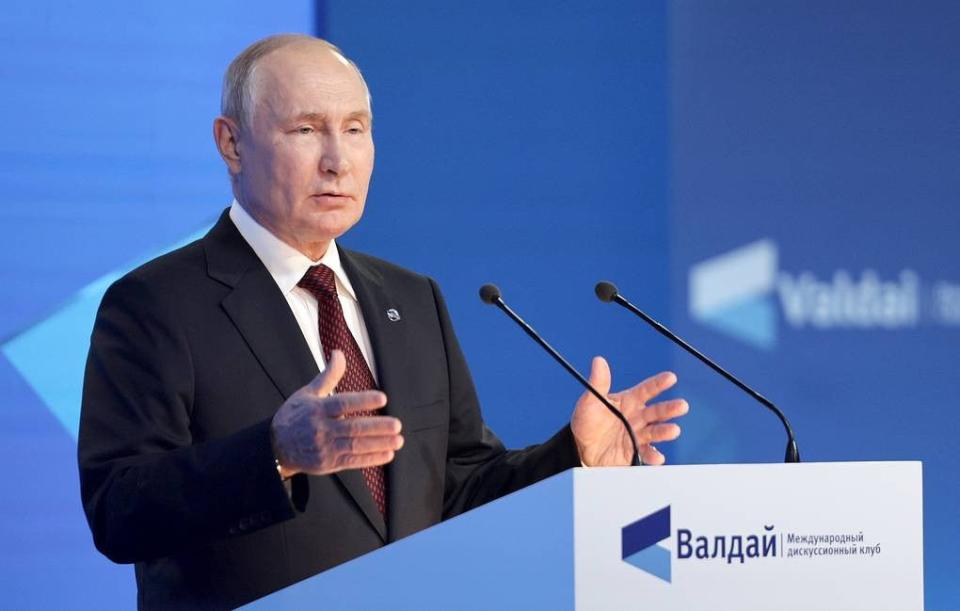Russia's Nuclear-Powered Cruise Missile Successfully Tested, Putin Says

- Oops!Something went wrong.Please try again later.
Russian President Vladimir Putin said today that his country had carried out a new test of a nuclear-powered cruise missile with "global range," called Burevestnik, and that it was successful. He also declined to rule out the possibility of Russia resuming live nuclear weapons testing in the future.
Putin offered the details about Burevestnik and other strategic weapons matters while speaking at the annual meeting of the Valdai Discussion Club, a Moscow-based think tank. The Russian president also said that his country was getting ever closer to fielding its newest nuclear-armed intercontinental ballistic missile, the RS-28 Sarmat, a test of which reportedly failed in February. He added that he saw no need for new nuclear doctrine changes in light of current events, including the ongoing war in Ukraine.
https://twitter.com/Mike_Eckel/status/1709950635330707700 https://twitter.com/KomissarWhipla/status/1709950138729255024?s=20
Putin first publicly disclosed the existence of Burevestnik in a fiery state-of-the-nation address back in 2018. In that speech, he also provided details about work on five other advanced weapon systems, including Sarmat, the nuclear-tipped Avangard hypersonic boost-glide vehicle, the Kinzhal air-launched ballistic missile, the Poseidon nuclear-powered and nuclear-armed torpedo, and the Peresvet laser directed energy weapon.
The Russian President did not say today when or where the latest Burevestnik test had been carried out. However, there had been multiple indications just recently that such an event was likely to occur soon at the Pankovo test site in the Novaya Zemlya archipelago in the Arctic Ocean.

A public notice had previously been issued warning civilian aircraft and vessels about "hazardous operations" around Pankovo in Novaya Zemlya starting October 2 and running through October 31.
https://twitter.com/Marco_Langbroek/status/1708986602947592541?s=20
Publicly available satellite imagery from September had also shown signs of activity at Pankovo. What could be seen from space was consistent with preparations for a missile test and to otherwise improve facilities at the site, according to recent reports from CNN and The New York Times, and expert analysis from the Middlebury Institute of International Studies.
https://twitter.com/Gerashchenko_en/status/1709561112956477838?s=20
Pankovo is understood to be one of at least two sites where Burevestnik, also known to NATO as SSC-X-9 Skyfall, has been tested in the past. At least four tests of the missile in Novaya Zemlya between 2017 and 2018 were reported to have been failures.
Testing of Burevestnik was also previously carried out at a site near the village of Nyonoksa, also written Nenoksa, in Russia's far northwestern region of Arkhangelsk. That was the location of one attempted test of the missile in 2019 that ended in a catastrophic failure and raised significant concerns about nuclear contamination, as you can read more about here.
There had been indications that the Russians were preparing to restart Burevestnik testing in Novaya Zemlya in 2020. Major news about the program quickly fell off afterward and it appeared to have been put on hiatus.
Publicly trackable military aerial activity in recent weeks also pointed to an impending test of some kind at Pankovo. This includes flights near Novaya Zemlya by RC-135W Rivet Joint intelligence, surveillance, and reconnaissance (ISR) aircraft belonging to the U.S. Air Force and the Royal Air Force (RAF) in the United Kingdom. A pair of Air Force Rivet Joint sorties in September "represented a slight uptick from usual known activity," The New York Times reported earlier this week.
https://twitter.com/Borrowed7Time/status/1706641821303177579 https://twitter.com/nukestrat/status/1704092068316942833 https://twitter.com/nukestrat/status/1570752577880588291?s=20
Rivet Joints are designed to collect a wide array of electronic and signals intelligence, as well as communications chatter, as you can read more about here. The RC-135Ws would definitely have been able to help gain insights into the nature of Russia's activity in and around Pankovo.

The arrival of a WC-135R Constant Phoenix in the United Kingdom yesterday also drew attention as being possibly connected to a Burevestnik test. The Constant Phoenix is a 'nuke sniffer' aircraft designed to collect air samples that can be used to glean information about possible nuclear weapon tests or radiological incidents. However, this jet has already left the United Kingdom and flown to Al Udeid Air Base in Qatar in the Middle East.
https://twitter.com/MeNMyRC1/status/1709968918821875777?s=20
Details about the broader state of the Burevestnik program and the missile itself, which is intended to be a nuclear-armed strategic weapon in addition to being nuclear-powered, remain scant. Suggestions have been made in the past it could use a nuclear thermal rocket or a nuclear-powered ramjet engine as its main propulsion method. In both of these concepts, which are not new, a small nuclear reactor replaces the typical chemical propellants and fuels.
The Russian Ministry of Defense released the video below in 2018 saying that it showed an earlier Burevestnik test launch, as well as examples of the missiles themselves.
https://www.youtube.com/watch?v=okS76WHh6FI\u0026t=2s
Theoretically, a nuclear-powered cruise missile using either one of these propulsion methods should have essentially unlimited range (relatively speaking). This would present significant challenges for an opponent since the missile's flight path could be extremely circuitous and irregular without impacting its ability to reach any point on Earth.
Whatever its exact design might be, Burevestnik's core concept raises serious safety concerns. There is the matter of what radioactive material the missile might release as it flies along and the question of what happens to its nuclear power source, no matter what it is, when it reaches its target. If Russia has been launching full-up Burevestnik prototypes this can only mean some amount of nuclear material has been strewn about even if in tests where everything has gone according to plan.
Putin's disclosure today about Burevestnik also follows a recent report from CNN suggesting that Russia, as well as the United States and China, may be taking steps to support the resumption of live nuclear weapon testing. The U.S. government has since categorically denied it is actively preparing for any such testing and has put forward an offer of on-site inspections for Russian and Chinese officials.
https://twitter.com/NNSAHruby/status/1706660366652960960
Russia, the United States, and China are all signatories to the 1996 Comprehensive Nuclear Test Ban Treaty (CTBT). Of this trio of countries, only Russia has ratified the agreement, though the United States and China have also imposed moratoriums on nuclear weapon testing. What was then the Soviet Union, the United States, and China conducted their last live nuclear weapon tests in 1990, 1992, and 1996, respectively.
While speaking at the Valdai Discussion Club gathering today, Putin said that Russia could theoretically withdraw from the CTBT, citing the lack of ratification of the treaty by the United States as a potential reason. At the same time, he said he was not prepared to say whether or not his country actually needed to be able to conduct new nuclear weapon testing.
https://twitter.com/ElenaChernenko/status/1709963295170437127?s=20 https://twitter.com/ElenaChernenko/status/1709963299238879615?s=20
Putin also rejected the idea that Russia needs to adopt a new official nuclear weapon doctrine with a lower threshold for potential employment.
"I simply don't see the need for this," he said. "There is no situation today in which, say, something would threaten Russian statehood and the existence of the Russian state. No. I think no person of sound mind and clear memory would think of using nuclear weapons against Russia."
Putin was responding to a direct question from Sergei Karaganov, a notable Russian foreign policy analyst and academic, who has recently called for more actively using the threat of nuclear weapons use to "contain, frighten and sober up our opponents."
This, of course, follows repeated nuclear saber-rattling by Putin and other Russian government officials in relation to the war in Ukraine. This has long prompted concerns about the potential for some kind of nuclear escalation in relation to that conflict, including the possible use of a limited nuclear strike to try to 'freeze' the situation in a way that is favorable to the Kremlin. There continues to be a debate among experts about just how likely Russia might be to use nuclear weapons if it falters significantly in Ukraine (especially when it comes to its hold on the Crimean Peninsula) or if the stability of Putin's regime more seriously comes into question.
"[Russia] has to respond to constantly mounting military and political pressure," Putin said at Valdai today. "Unilateral steps, no matter who takes them, will inevitably trigger counteractions."

It's certainly hard not to see Putin's disclosure today of the Burevestnik test, in particular, as another example of Russian nuclear signaling, at least in part related to the conflict in Ukraine.
When it comes to the Burevestnik itself, how that program is progressing, and how close Russia might be to deploying any significant number of these missiles operationally, much still remains to be seen.
Contact the author: joe@thedrive.com

